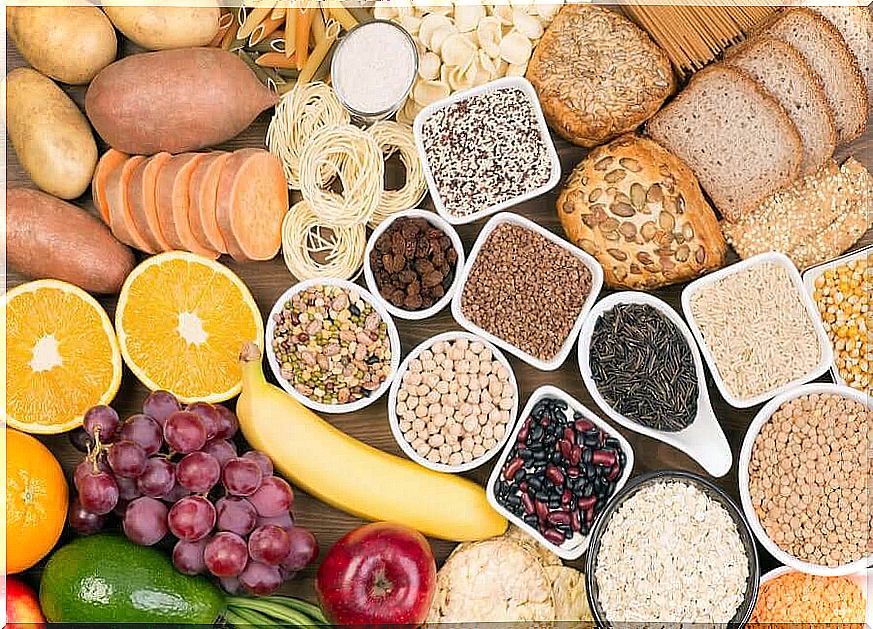Glycemic Index: What Exactly Is It?

The glycemic index is a value established to classify foods based on the effect they have on blood sugar. In other words, to measure how a particular food affects blood sugars.
Once the food has been ingested and absorbed by the intestine, blood sugar values are bound to vary. This variation depends on the nutritional properties of the ingested food. The blood sugar of a person who ate candy will be different from that of a person who ate a plate of pasta.
The purpose of the glycemic index, therefore, is to reflect the ability of foods to increase the amount of sugar in the blood. It is not an immediately understandable number, but a mathematical formula created specifically for this purpose.
Taking into consideration the glycemic index, we can talk about two groups of foods (we will later see that the official classification divides them into three):
- Foods with a low glycemic index : they do not cause a significant increase in blood sugar immediately after their ingestion. In addition to this, the increase they produce lasts over time with greater persistence.
- High-glycemic index foods: These foods immediately raise blood sugar levels within the body, but their effect is short-lived.
The formula was created in 1981. In 1995, complete tables were created, containing more than 500 foods cataloged according to their glycemic index. Since 2002 there has been the international table, proposed by the researcher Foster and his team, which we can consider the most widespread today.
What factors affect the glycemic index?
The glycemic index is not equivalent to the amount of carbon hydrates contained in the food. One thing is the effect it has on blood sugar, another is its natural composition. This confusion could be counterproductive. The glycemic value of a food depends on three factors:
1. The type of simple sugar present
As we said, the nutritional composition does not directly equate to the effect exerted on blood sugar. Potatoes, for example, contain a type of simple sugar that is different from that of milk.
The body, therefore, will react differently to the ingestion of these two foods and will process them at different times.
2. The presence of other nutrients
Sugars are not isolated from food, but are found linked to other substances, such as fats. Sugar from nuts, for example, is combined with dietary fat and fiber, so the body needs more time to separate this sugar and then process it.
3. Food processing
Cooked, boiled, or fried foods do not have the same effect on blood sugar. Exposure to cold from the refrigerator or freezer also varies their final effect. We know that mashed potatoes have a higher glycemic index than fried potatoes.
Fruit juice also has a higher glycemic index than the whole fruit itself. Pasta cooked al dente has a lower index than that which has been subjected to a longer cooking.

What values are used?
The numbers that define this value come from laboratory tests and formulas. For our daily use, it is not necessary to understand how the calculations are made or how this formula was worked out.
However, we can say that it is a proportional measure of the speed at which the carbon hydrates of food are manifested in the form of sugar in the blood. It is proportional because the reference value is always that of pure glucose.
Pure glucose is assigned the value of 100. On the basis of this, the indices of the other foods are established, giving rise to three general groups:
- Low : foods with a value between 1 and 55.
- Medium : food values between 56 and 69.
- High : all foods with a value above 70.
The higher this number, the faster the blood sugar rises following ingestion of the food. Conversely, a low glycemic index belongs to foods that do not cause a substantial rise in blood sugar after they are ingested.
We emphasize again that this value does not reflect the nutritional composition of the food. It therefore does not offer us any information on the fats contained in foods or their kilocalories, much less on the specific amount of sugar.
How does the glycemic index affect daily life?

As we have anticipated, the value we are talking about is not the only one we need to pay attention to. It can help us prepare a diet for diabetic people, but always in combination with other factors.
For example, a packaged cereal bar has a high glycemic index, but at the same time a low glycemic load, due to the small portion.
In diets prepared by professionals, foods are varied, which is why the glycemic index comes from their combination. A food with a high value can be compensated by the presence in the same dish of another one that instead has a low index.
On the other hand, during the course of a day there are more than one meals, consequently the glycemic indexes combine with each other. We know that a low value meal is able to improve the glucose assimilation of the next meal through a cumulative effect.
Of course, in the presence of metabolic diseases such as diabetes, it is imperative that the diet be worked out by a nutritionist. Consulting these professionals can clear up doubts about your eating habits.









